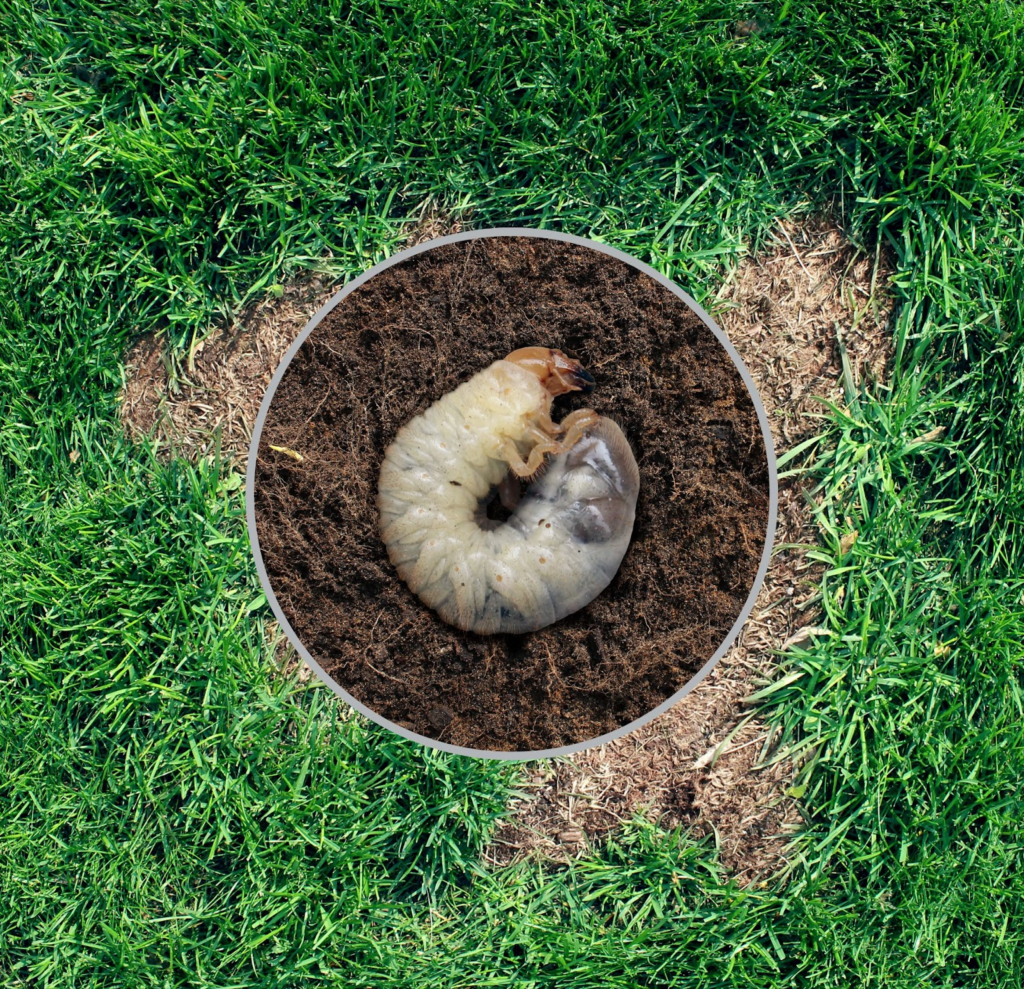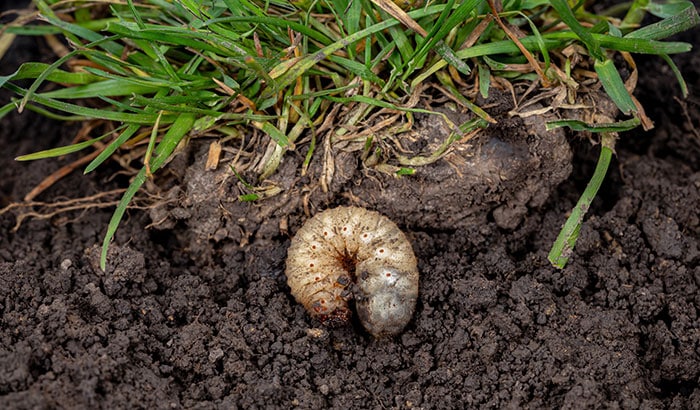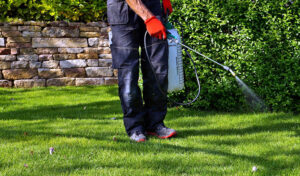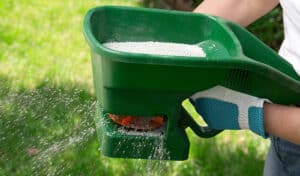If you live in Utah and have a lawn, chances are you have encountered signs of lawn grubs. These pesky insects can damage your lawn, leaving it brown and patchy. Luckily, there are several methods to get rid of Utah lawn grubs, ranging from preventative measures to chemical and organic treatments.
This blog covers five ways you can get rid of Utah lawn grubs. By the end of this article, you will have a range of options to keep your lawn healthy and grub-free. Keep reading to learn more!
- Identify the Lawn Grubs
Lawn grubs are the larval stage of various beetles, including Japanese, June, and chafer beetles. These beetles lay their eggs in the soil during the summer months, which then hatch into small white grubs that feed on the roots of the grass.
In Utah, the most common lawn grubs are the larvae of the Japanese beetle and the June beetle. Japanese beetle larvae are typically found in northern Utah, while June beetle larvae are more common in the southern parts of the state. Chafer beetles are less common but can still be found in Utah lawns.
To identify lawn grubs, you need to look for tiny, white, C-shaped larvae with six legs and a brown head. You can find them by digging a small patch of grass and soil and searching through the soil. Lawn grubs are most active in spring and fall, so it’s best to check for them during these seasons.
One of the other signs of lawn grubs is yellow patches of grass that don’t seem to respond to watering or fertilizing. These patches can spread quickly and become large areas of dead grass. You might also see birds like crows, starlings, or grackles pecking at the grass in search of grubs to eat.
It’s essential to identify the type of lawn grub you have in your lawn before choosing a treatment method. Japanese beetle grubs have a different life cycle than June beetle grubs, so the timing of treatments can vary. Additionally, some treatment methods are more effective on certain types of grubs than others, so identifying the type of grub can help you choose the most effective treatment.

- Preventing Utah Lawn Grubs
Preventing lawn grubs from infesting your lawn is the best way to avoid the need for costly treatments. Here are some lawn care practices that can help prevent lawn grubs in Utah:
- Proper Watering and Fertilization: Lawn grubs are attracted to weak and stressed lawns, so keeping your lawn healthy and well-nourished is essential. Regular fertilization with the right nutrients will help promote strong, healthy grass that is less susceptible to infestation by lawn grubs.
It’s also important to water your lawn deeply and infrequently, rather than shallowly and frequently, to encourage deep root growth. This will make your grass more resilient to drought and other stresses and make it harder for lawn grubs to damage the roots.
- Mowing Practices that Prevent Lawn Grubs: Lawn grubs thrive in tall grass, so it’s important to mow your lawn regularly and keep it at the appropriate height.
In Utah, the recommended mowing height for most grass types is around 2-3 inches. By keeping your lawn at this height, you can discourage lawn grubs from making your lawn their home. Additionally, it’s best to avoid mowing your lawn during the hottest parts of the day when the grass is stressed and more susceptible to damage.
- Aerate Your Lawn: Soil compaction can create the perfect environment for lawn grubs to thrive, so it’s important to aerate your lawn regularly. Aeration helps to loosen the soil and create space for water, air, and nutrients to reach the roots of your grass. This will help to promote healthy root growth and make it harder for lawn grubs to damage the roots.
By following these lawn care practices, you can create a healthy, resilient lawn that is less susceptible to infestation by lawn grubs. A healthy lawn looks great and is more resistant to other pests and diseases, making it easier to maintain year-round.
- Chemical Methods
If your lawn has been infested with lawn grubs, you’ll want to take action to get rid of them. There are both chemical and organic methods for controlling lawn grubs in Utah.
Chemical treatments are one of the most effective ways to control lawn grubs. These treatments can be applied to your lawn in the form of granules or liquid sprays, and they work by killing the grubs in your lawn. The most common chemicals used to control lawn grubs include imidacloprid, halofenozide, and carbaryl.
However, chemical treatments can have some drawbacks. Some chemicals can harm beneficial insects, like bees and butterflies, and they can also harm other wildlife if they are not used properly. Additionally, chemical treatments can be expensive and may require multiple applications over time to be effective.
- Organic Methods
Organic Methods to Get Rid of Utah Lawn Grubs: Organic methods use natural substances to control lawn grubs. Some of the most effective organic methods include using beneficial nematodes, milky spore disease, and diatomaceous earth.
Using Milky Spore
Milky spore is a natural bacterium that can control lawn grubs. It infects and kills the larvae of Japanese beetles, a common type of lawn grub found in Utah. Milky spore is a bacterium called Bacillus popilliae, which infects and kills the larvae of Japanese beetles. Milky spores multiply inside the larva, producing a protein crystal that kills the grub. The dead grub then releases more milky spore bacteria into the soil, which can infect and kill other lawn grubs.
Milky spore is safe for humans, pets, and other wildlife and can be a natural alternative to chemical insecticides.
Milky spore is applied to the lawn as a powder sprinkled onto the soil surface. The bacteria then enter the soil and infect the lawn grubs.
Milky spore is applied in late summer or early fall when the lawn grubs are actively feeding and susceptible to infection. The powder is applied using a spreader or by hand and should be watered thoroughly after application.
Milky spore is most effective when applied over several years, as it takes time for the bacteria to build up in the soil and infect the lawn grubs.
Using Nematodes
One effective and environmentally friendly way to control lawn grubs is by using beneficial nematodes. Nematodes are tiny, worm-like organisms that live in the soil and feed on lawn grubs and other soil-dwelling pests.
When applied to your lawn, they seek out and attack lawn grubs by entering the grub’s body through natural openings. Once inside the grub, the nematodes release bacteria that will kill the grub in just a few days. After the grub has been killed, the nematodes will continue to reproduce and feed on other grubs in the soil, providing long-term control.
Nematodes are available for purchase online and at garden centers. When purchasing nematodes, make sure you choose a species specific to lawn grubs and appropriate for the size of your lawn. It’s essential to follow the instructions provided with the nematodes carefully, as different species have different requirements for application.
Generally, nematodes are applied to the lawn using a hose-end sprayer or a watering can. Before applying, water your lawn thoroughly to ensure that the nematodes have a moist environment to survive in. Apply the nematodes in the early morning or late evening when the temperature is cooler, and the sun is less intense, as high temperatures can kill the nematodes.
Using Diatomaceous Earth
Diatomaceous earth (DE) is a natural, organic powder that contains the fossilized remains of diatoms. The silica in DE is abrasive and can damage the exoskeleton of insects, including lawn grubs. When lawn grubs come into contact with DE, the silica particles stick to their bodies and begin to absorb the waxy coating, which can cause dehydration and death.
DE is safe for humans and pets and is an environmentally friendly alternative to chemical insecticides.
DE is applied to the lawn as a powder that can be sprinkled onto the soil surface. The powder can also be mixed with water and applied using a sprayer. DE should be applied when the lawn is dry, and there is little wind to prevent the powder from blowing away.
DE can be applied at any time of the year, but it is most effective when applied during the peak feeding times of the lawn grubs, typically in the late summer or early fall.
When choosing between chemical and organic methods for controlling lawn grubs, weighing the pros and cons of each method and considering your personal preferences and values is essential.
- Biological Control
Biological control is another effective and eco-friendly way to control lawn grubs. This method uses natural enemies of lawn grubs, such as beneficial insects, to reduce their populations.
Biological control uses natural enemies, such as predators and parasites, to control pests. Regarding lawn grubs, several beneficial insects can be used for biological control, including ground beetles, rove beetles, and parasitic wasps. These insects prey on lawn grubs and can significantly reduce their populations.
Biological control can be effective against lawn grubs, particularly when combined with other lawn care practices such as proper watering and fertilization. However, it may take some time for the beneficial insects to establish a population in your lawn and begin to control the lawn grubs.
Ground beetles and rove beetles are two common predators of lawn grubs. These nocturnal insects can be found in healthy lawns that provide a habitat for them. You can attract these insects to your lawn by reducing the use of pesticides and creating a healthy lawn with proper watering and fertilization.
Parasitic wasps are another beneficial insect that can be used for the biological control of lawn grubs. These wasps lay their eggs inside the body of the lawn grub, which eventually kills the grub. To attract parasitic wasps to your lawn, you can plant flowers and other plants that provide nectar and pollen for adult wasps.
To attract beneficial insects to your lawn, you can take several steps:
- Reduce the use of pesticides: Pesticides can harm beneficial insects, so reducing their use can create a more hospitable environment for these insects to thrive.
- Provide a diverse habitat: Beneficial insects need diverse habitats to survive, so creating a lawn with a mix of grasses, flowers, and shrubs can provide a habitat for them.
- Provide a water source: Beneficial insects need water to survive, so providing a water source, such as a bird bath or shallow dish of water, can help attract them to your lawn.
- Avoid over-fertilizing: Over-fertilization can create an environment too rich for beneficial insects, so avoid over-fertilizing your lawn.
Overall, biological control can be an effective way to control lawn grubs without using harmful chemicals. By attracting beneficial insects to your lawn and creating a healthy environment for them to thrive, you can reduce the populations of lawn grubs and create a healthy, vibrant lawn.

Summit Lawn & Pest Control
If you need professional help to get rid of your lawn grubs, look no further than Summit Lawn & Pest Control. Our team of experts is trained to identify and treat all types of lawn grubs using chemical and organic methods.
With our extensive knowledge and experience, you can trust Summit Lawn & Pest Control to keep your lawn healthy and grub-free. Contact us to learn more about our services, and schedule a consultation today.







